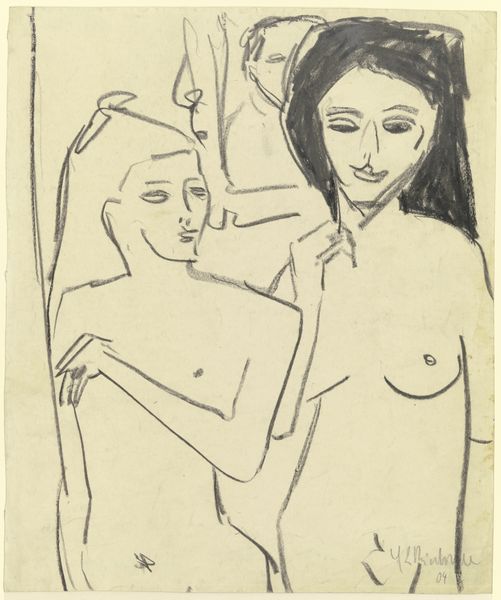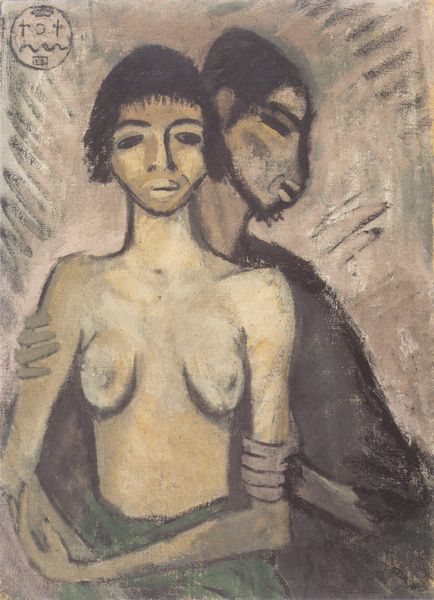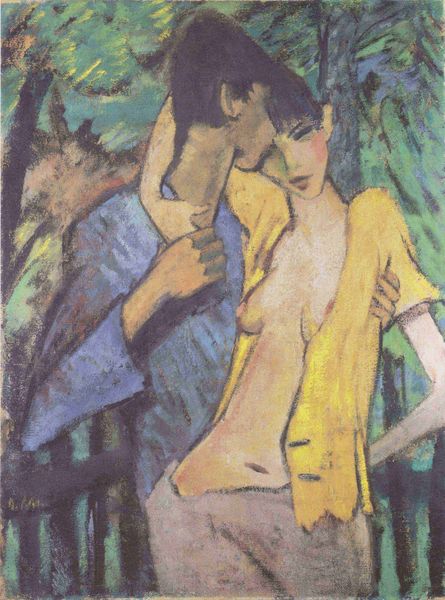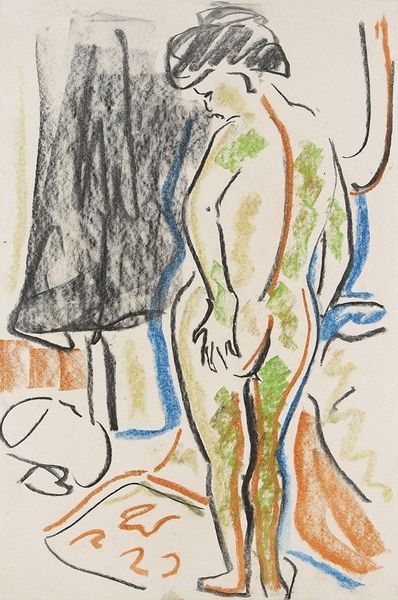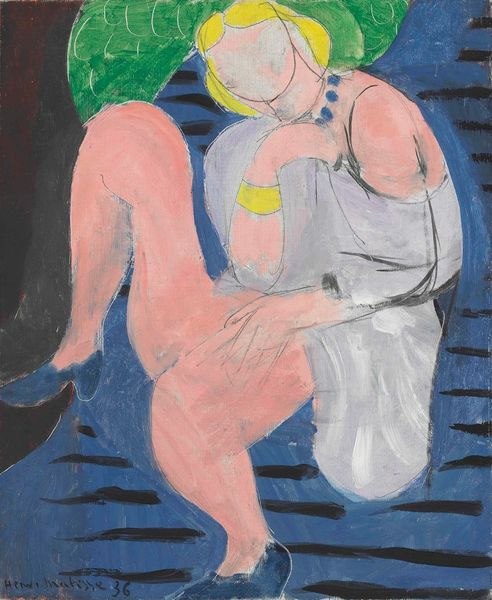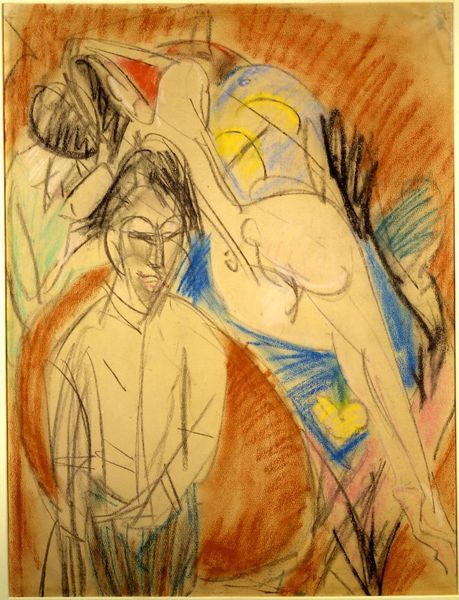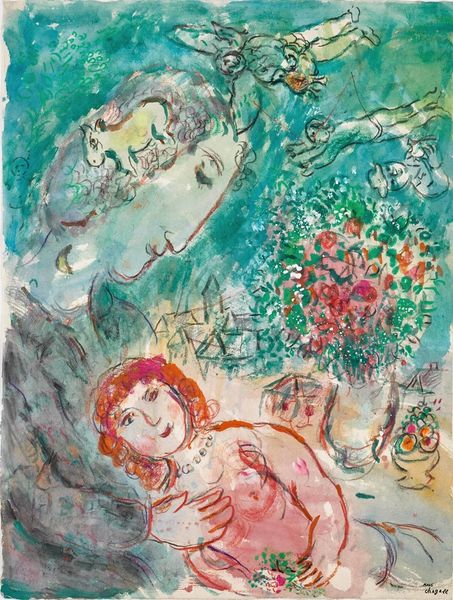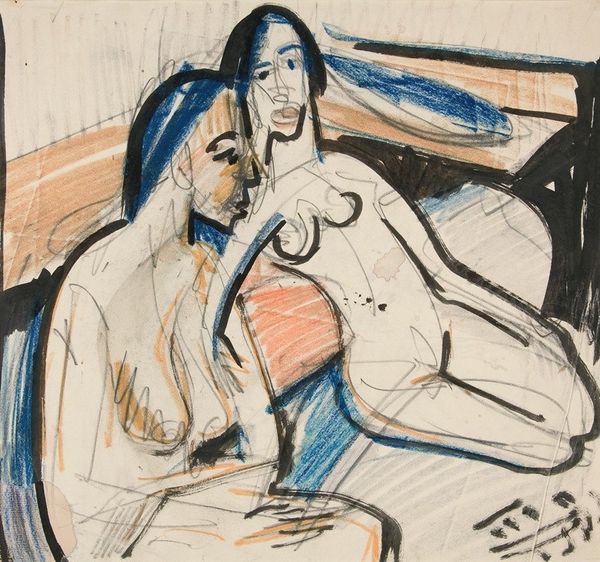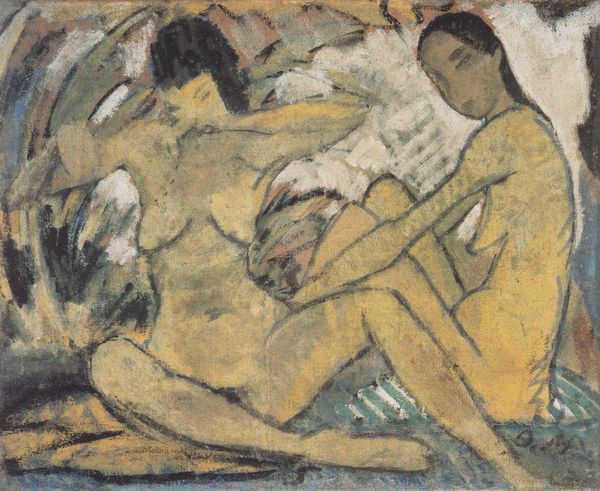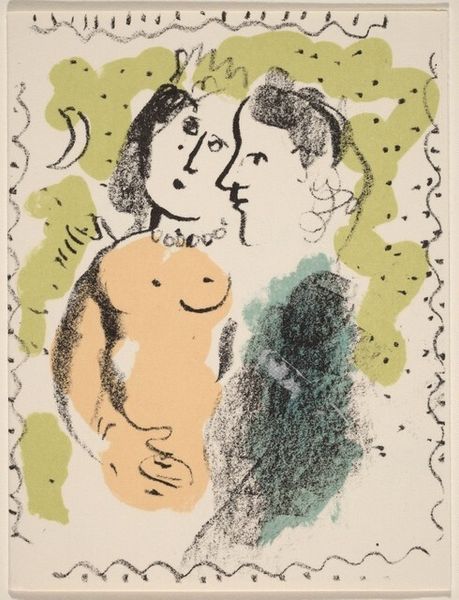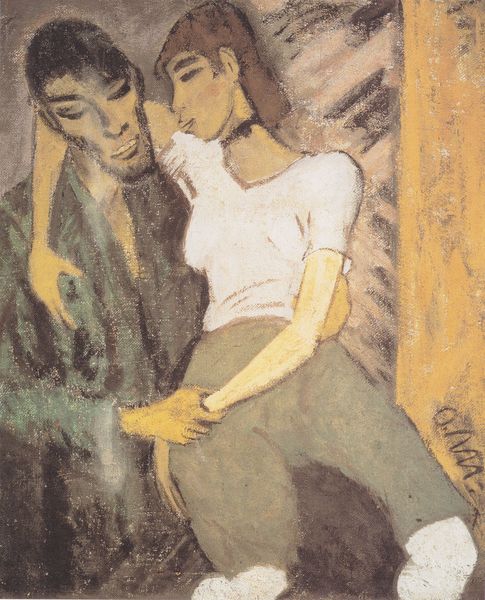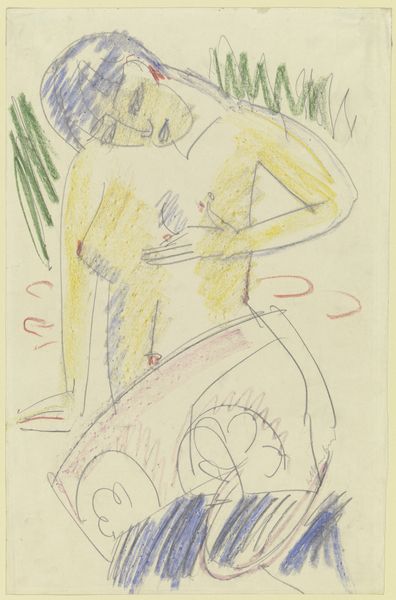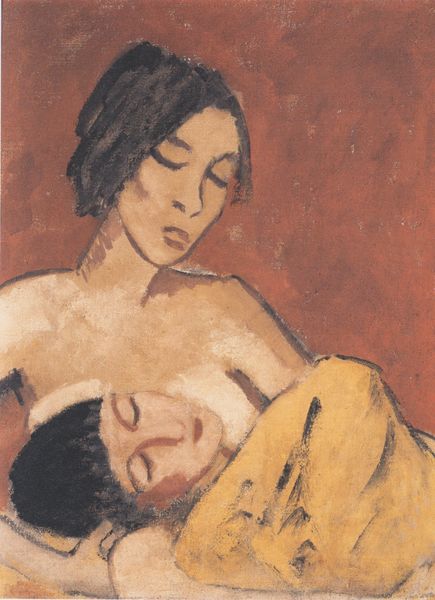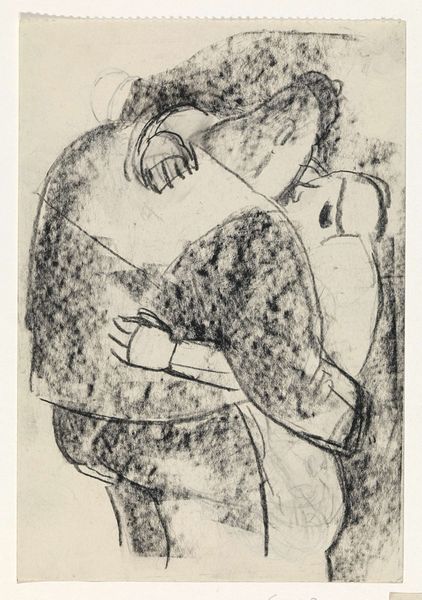
drawing, chalk
#
portrait
#
drawing
#
german-expressionism
#
figuration
#
expressionism
#
chalk
#
nude
Copyright: Public Domain
Curator: Welcome. Today, we're examining Ernst Ludwig Kirchner’s “Fränzi in front of a Carved Chair,” created around 1910. This chalk drawing embodies the raw emotion of German Expressionism, and is currently housed here at the Städel Museum. Art Historian: The colors immediately grab me. They're discordant, almost violent, but mesmerizing. The girl’s face has such a world-weary expression, but her clothing seems so delicate and young. It's an intriguing contrast. Curator: Absolutely. The figure of Fränzi, one of Kirchner's frequent models, allows us to delve into the socio-political dynamics of the time. Expressionism emerged during a period of immense social upheaval and anxieties about modern life. These artists challenged conventional modes of representation, prioritizing emotion and psychological impact over realistic depiction. Art Historian: I see it. Her crossed arms could symbolize defensiveness or perhaps introspection. And the looming, almost menacing, figure behind her, the so-called "carved chair," takes on a rather human, judgmental presence. What’s the symbology here? Is she guarded? Is the looming figure some psychological manifestation of oppression? Curator: Precisely! These young women like Fränzi, often associated with bohemian circles, became symbols of social critique and emerging female agency, but also subject to exploitation. Their position was precarious and often informed by gendered and class-based power dynamics. Art Historian: The mask-like qualities of both faces heighten the drama. Masks often conceal as much as they reveal. The girl’s youthful features are set against those shadows... there’s tension between vulnerability and a harsh exterior. And is the awkward flatness here a symbolic distancing of this artist and subject? Curator: Undoubtedly. Kirchner’s involvement with Die Brücke saw him seeking to critique the art establishment, by choosing “outsider” subjects and drawing inspiration from non-Western art. This created challenging depictions, which forced society to confront its discomfort, revealing latent anxieties around sexual morality, gender roles and artistic conventions. Art Historian: The intensity of color adds another layer to these challenging themes, then. It forces an emotional reaction from the viewer, refusing indifference. The girl may be physically confined in the piece, but Kirchner offers us insight to another kind of captivity—that of psychological confines. Curator: It all contributes to this evocative snapshot of a transitional moment, highlighting the complex relationship between artist, model, and society. Thank you for sharing your interpretations. Art Historian: Thank you. What an insightful look into the many layers of "Fränzi."
Comments
stadelmuseum almost 2 years ago
⋮
Kirchner used black chalk to lay out the contours of Fränzi’s body in simple, concise lines. The depiction is slightly distorted and – lacking internal detail or shading that could indicate volume – planar in character. The artist captured the girl with a slightly lowered gaze, sitting on a colourfully painted wooden bench. He had carved the seat himself, cutting the relief of a standing nude into its high back. In both colour scheme and formal conception, this relief has a more three-dimensional appearance than Fränzi herself – human being and artwork thus enter into suspenseful dialogue.
Join the conversation
Join millions of artists and users on Artera today and experience the ultimate creative platform.
